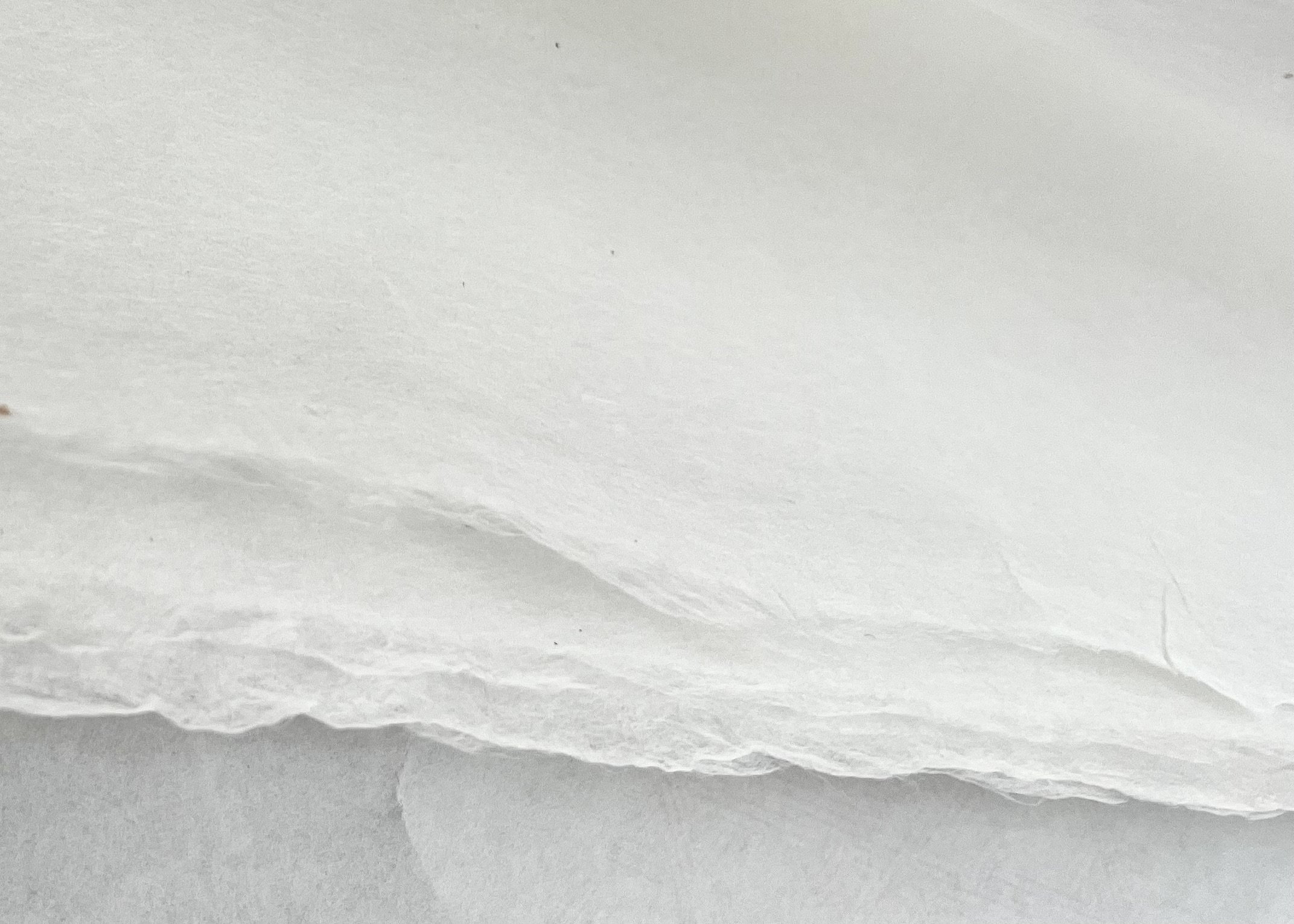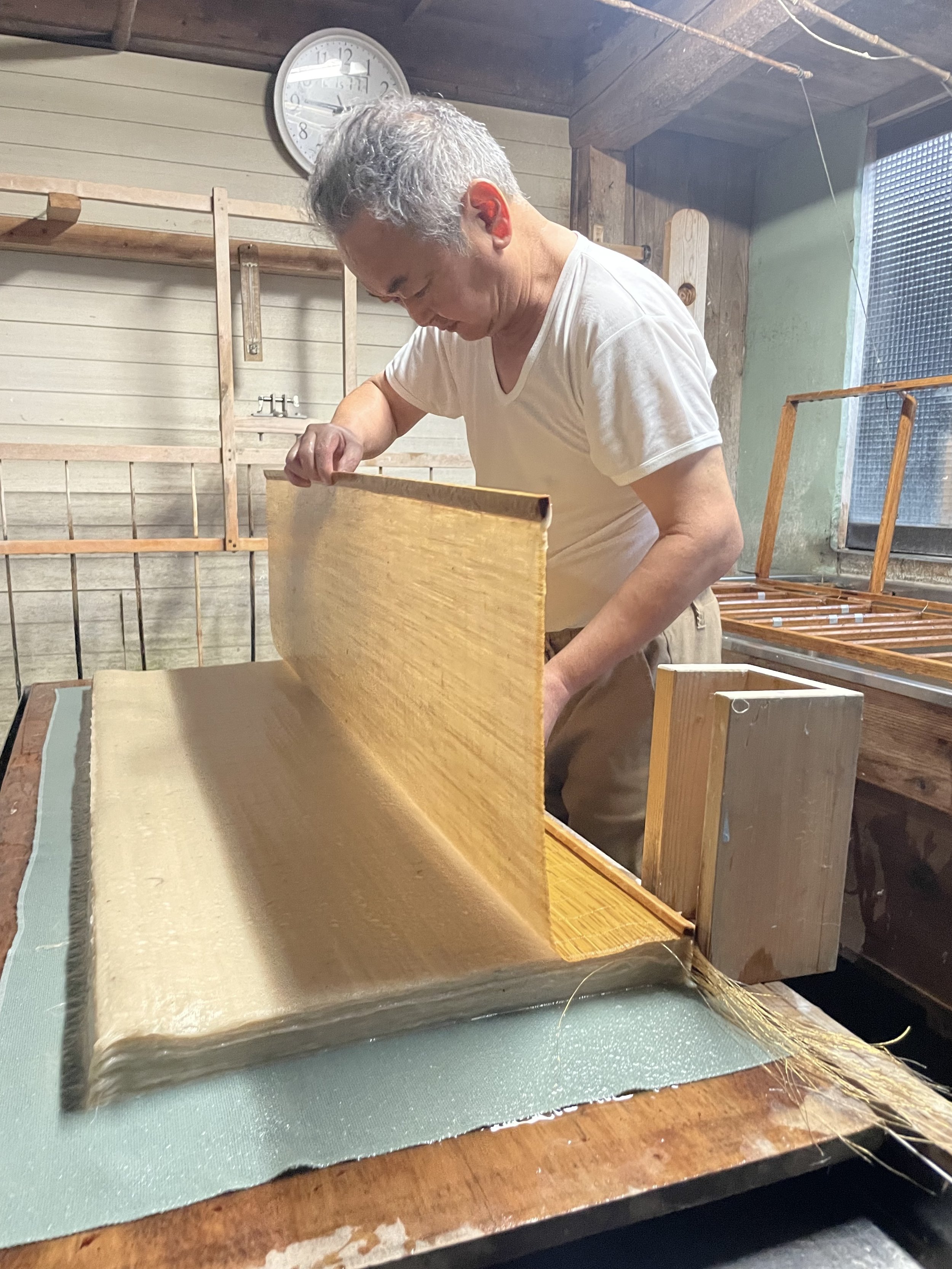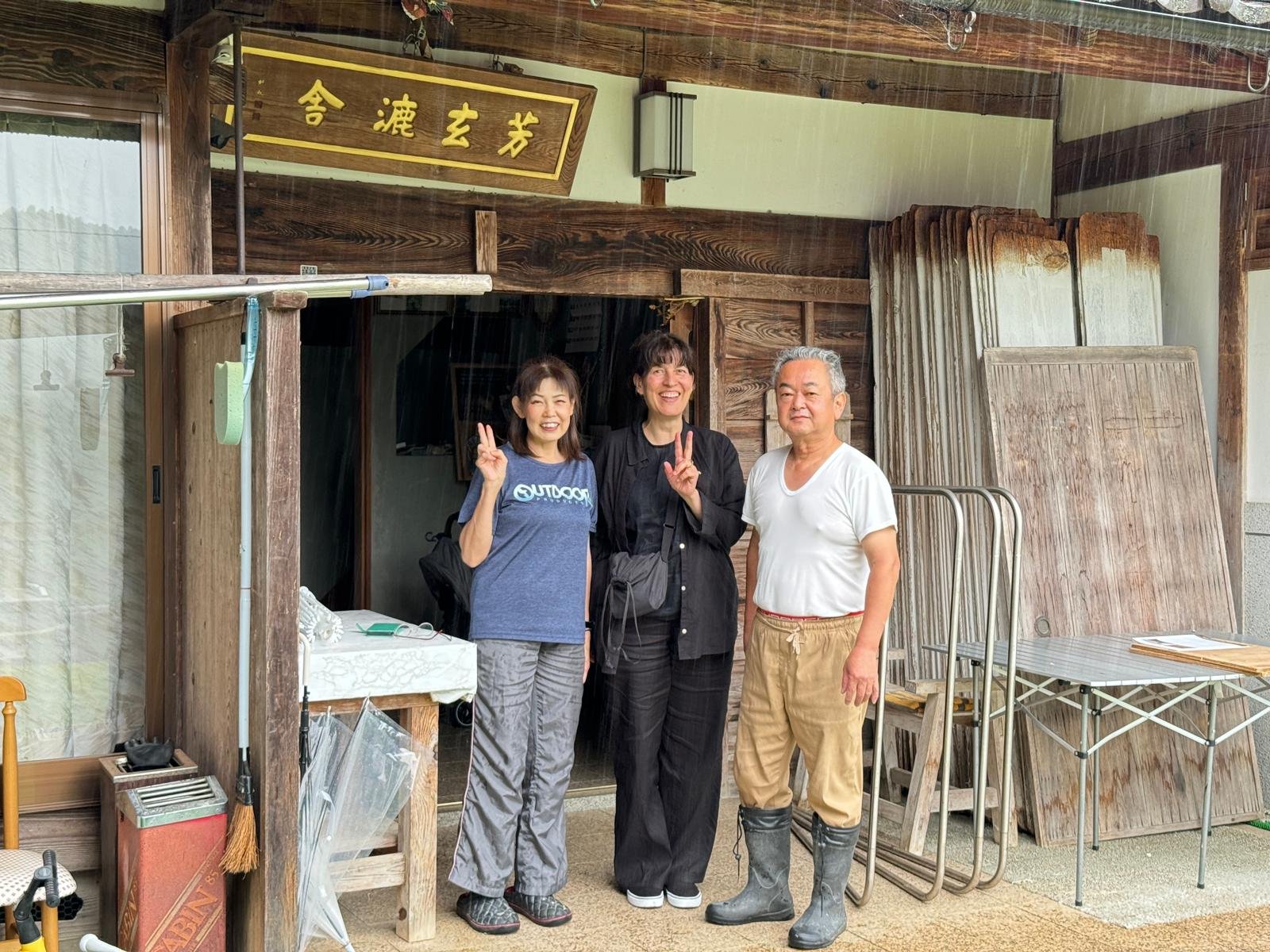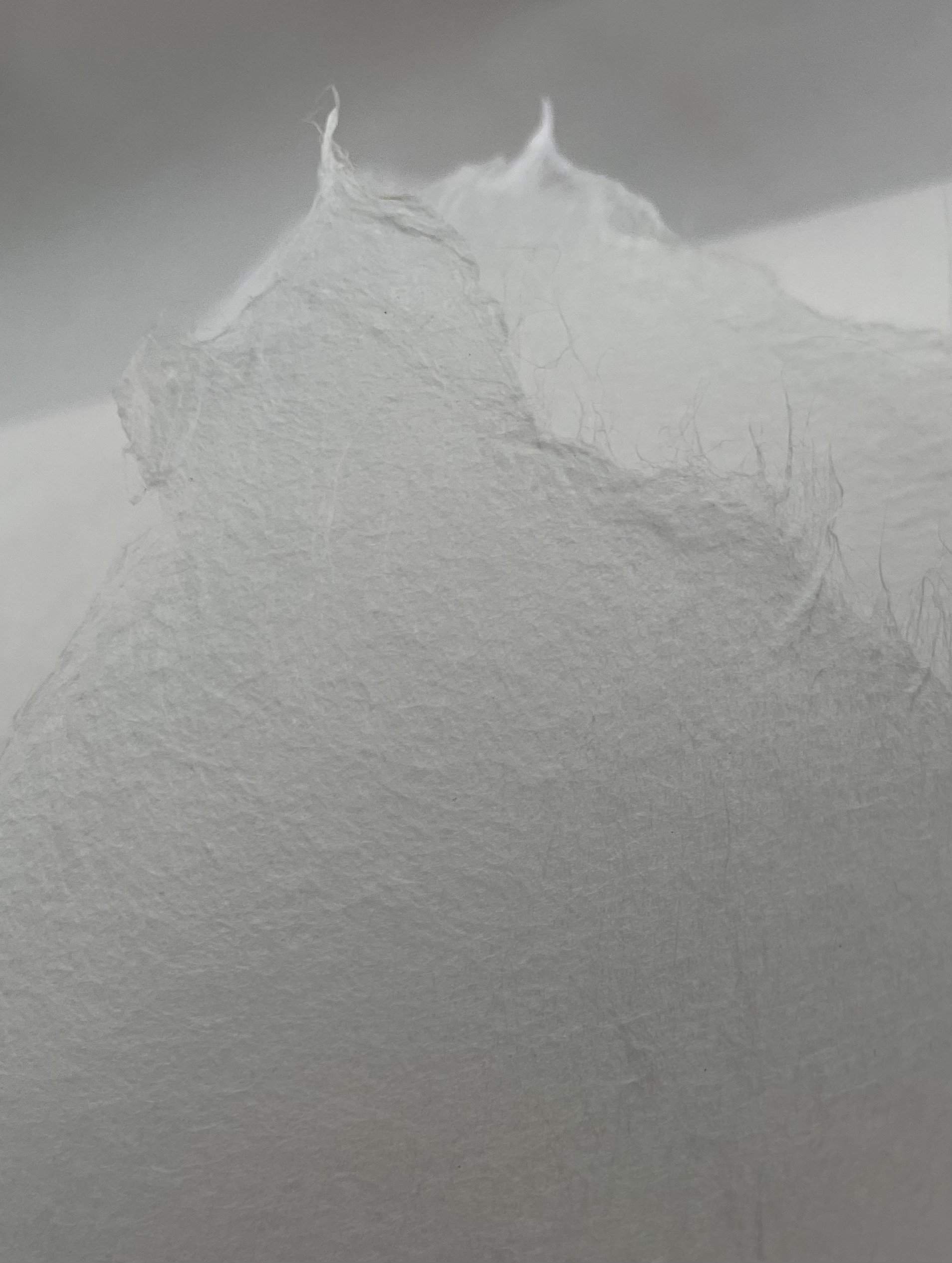paper

Vivienne’s art materials come directly from the natural world, carrying their essence into her art.
There is a deep resonance in using endangered crafts to honour endangered nature in her long-term ongoing projects
now a thread, woven with connection to people, place, and the fragile beauty of what remains.
‘ . . . Japanese paper gives us a certain feeling of warmth, of calm and repose. Even the same white could as well be one color for Western paper and another for our own. Western paper turns away the light, while our paper seems to take it in, to envelop it gently, like the soft surface of a first snowfall. It gives off no sound when it is crumpled or folded, it is quiet and pliant to the touch as the leaf of a tree . ‘
Source: In Praise of Shadows by Junichiro Tanizaki




My journey to the rainy, misty magical mountains of Japan led me to the workshop of the sixth-generation washi paper artisans—one of the few families entrusted by the Japanese government to produce paper for national treasures. The artisans—a husband and wife—shared that their daughter has been appointed to carry on this legacy. In a craft where female successors are still rare, her rise is a testament to shifting traditions, to heritage finding new roots. Their highly archival papers are used by institutions like the Smithsonian and the British Library.
Seeing the fields where the kōzo plants grow and the clear waters of the river that feeds their process, I witnessed the making of their paper—each sheet a history. To be invited into this sacred space felt like stepping into a story.
Bringing back these sustainable art materials—the papers, brushes, and inks from Japan—I found my own art changed. There is a deep resonance in using an endangered craft to honour endangered nature—my work now a thread, woven with connection to people, place, and the fragile beauty of what remains.


A love for exquisite papers, particularly drawn to the artistry of handmade creations, including the delicate beauty of Japanese washi paper.
The papers shown here were purchased in a 600 year old paper shop in Tokyo.